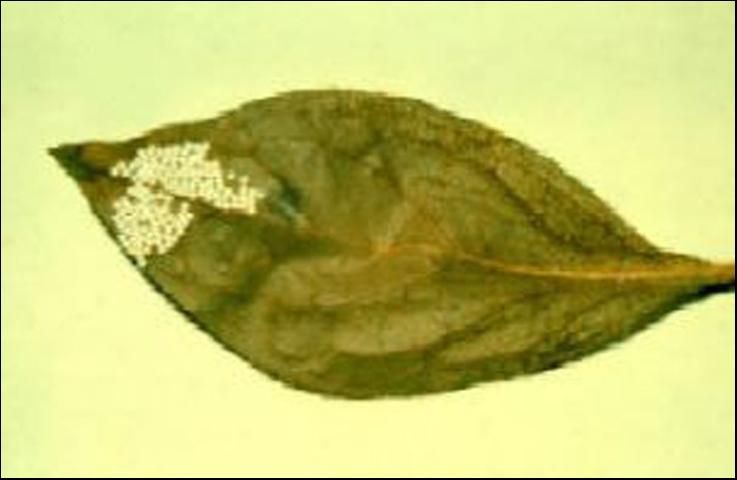The Featured Creatures collection provides in-depth profiles of insects, nematodes, arachnids and other organisms relevant to Florida. These profiles are intended for the use of interested laypersons with some knowledge of biology as well as academic audiences.
Introduction
The azalea caterpillar, Datana major Grote & Robinson, is found in Florida from July through October on azaleas (Rhododendron spp.). Often, the caterpillars completely defoliate much of the plant before they are detected. While the caterpillar appears hairy, it is harmless to humans and can be picked off the bushes by hand.
Distribution and Host
The caterpillar is found in Florida as far south as Polk and Hillsborough counties. Rhododendron spp. are the only known hosts in Florida. Nationwide, it is limited to the southeastern quarter of the United States as far north as Maryland. The caterpillars seem to prefer indica azaleas, but have been reported on blueberry in Delaware, red oak in Maryland, and andromeda and apple in the mid-Atlantic states (Johnson and Lyon 1991).
Description
Eggs
Eggs (Figure 1) are deposited by the female moth in late spring in masses of 80 to 100 on the underside of the leaf.

Credit: James Baker, North Carolina State University
Larvae
The first instar caterpillars feed in a cluster side by side unless disturbed (Figure 2). The first instar caterpillars are approximately 3/8 inch long after feeding for eight to ten hours. They remain gregarious and soon devour the entire leaf.

Credit: James Baker, North Carolina State University
The first instar caterpillar is yellow with seven red longitudinal stripes and a black head. As the larva matures it becomes highly colored. The mature caterpillar is about two inches long and predominately black, with a red last segment and eight broken yellow (occasionally white) lengthwise stripes (Figure 3). The head and legs are mahogany-red.

Credit: University of Florida
Adult
The adult moth (Figure 4) is light brown with a wing span of 1 3/4 inches.

Credit: James Baker, North Carolina State University
Field Observations
The semi-skeletonized leaves dry up, turn brown, and remain on the plant for several days. If disturbed some of the caterpillars drop one or two inches below the infested leaf and hang by a silken thread. When it is disturbed, the caterpillar raises its front and rear ends into the air. Young larvae skeletonize the leaves and the larger ones eat the entire leaf. In some parts of the South there may be a partial second generation, but one generation is usually the rule. It is thought to overwinter in the pupal stage (Johnson and Lyon 1991).
Damage
Most of the damage in the southeast United States occurs in August and September, but in Florida it continues through October (Johnson and Lyon 1991).
Management
Landscape Integrated Pest Management
Natural Products for Managing Landscape and Garden Pests in Florida
Selected References
Baker, James R. Azalea Caterpillar. Insect and Related Pests of Shrubs. (No longer available online)
Johnson, W.T., H.H. Lyon, C.S. Koehler, and J.A. Weidhass. 1991. Insects That Feed on Trees and Shrubs. Cornell University Press, Ithaca, NY. 600 p.